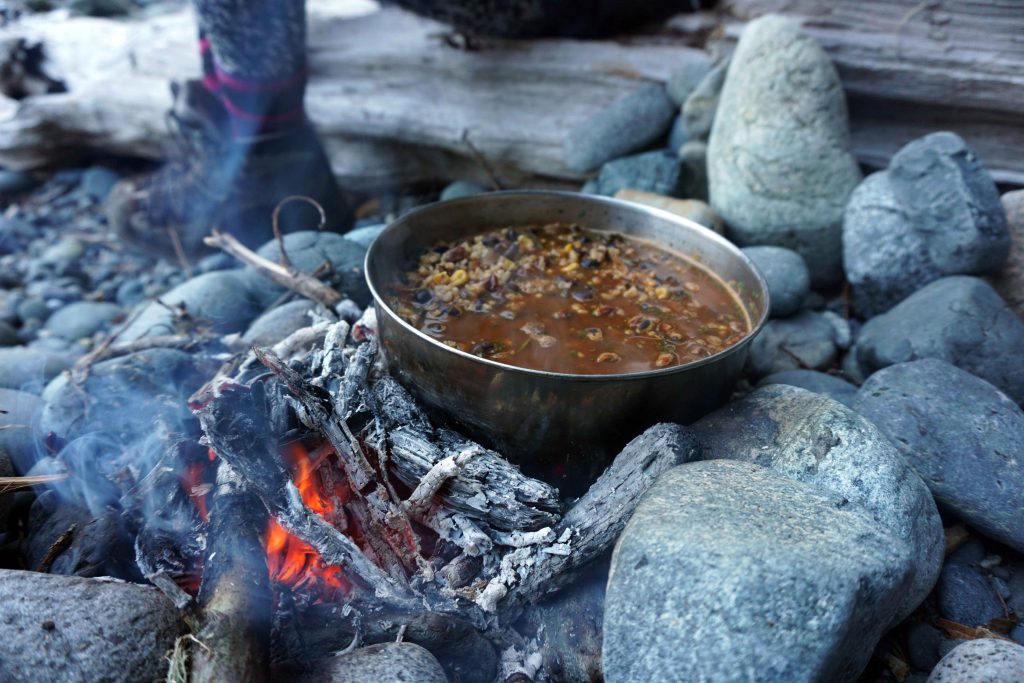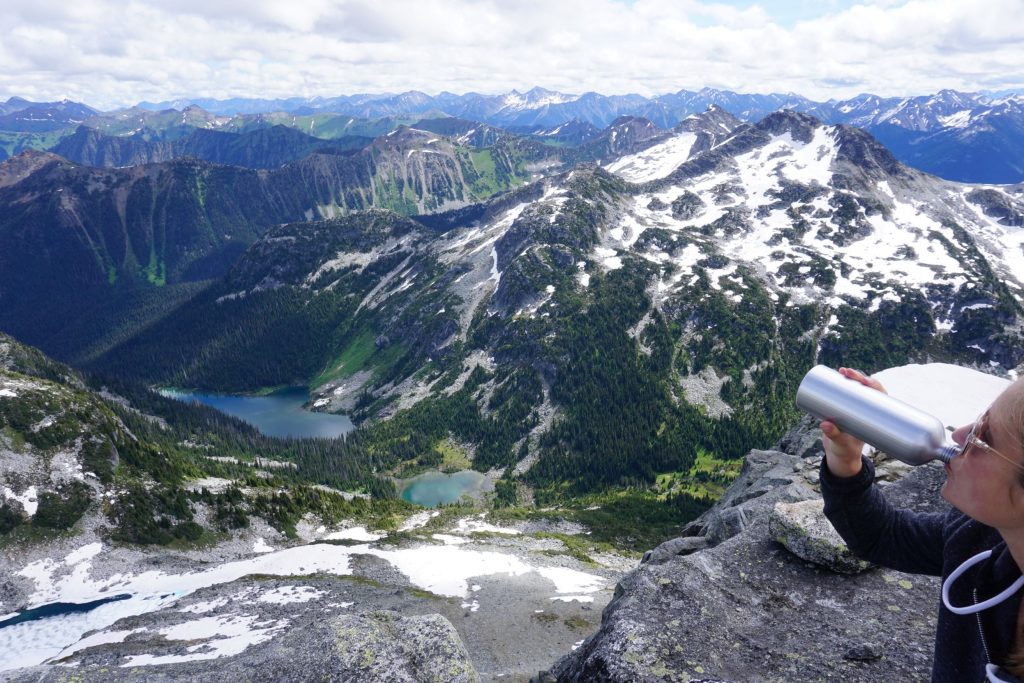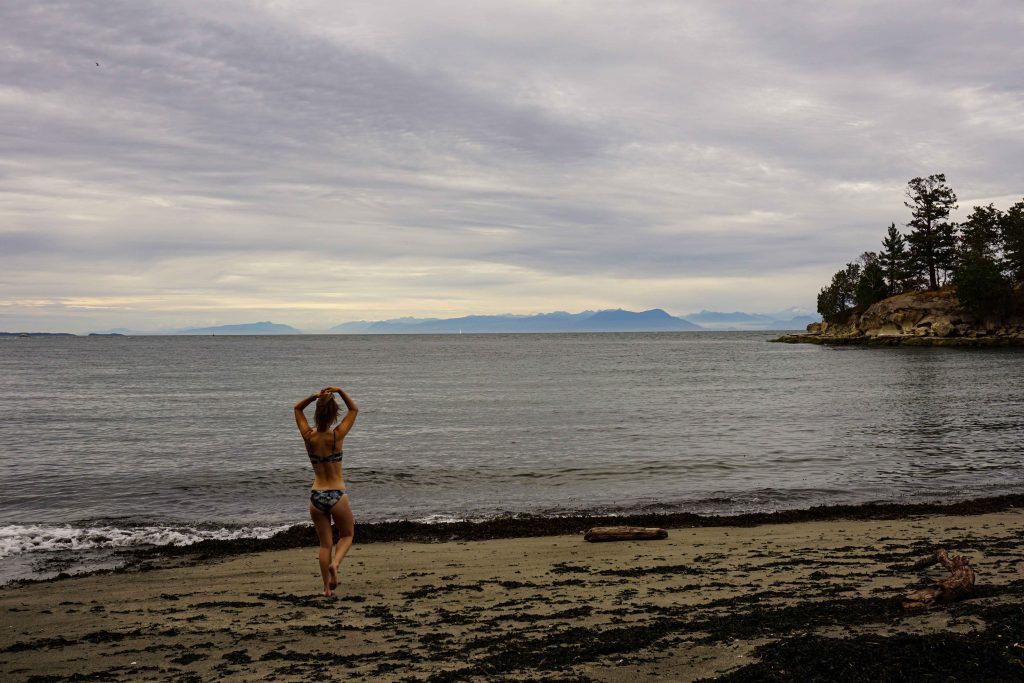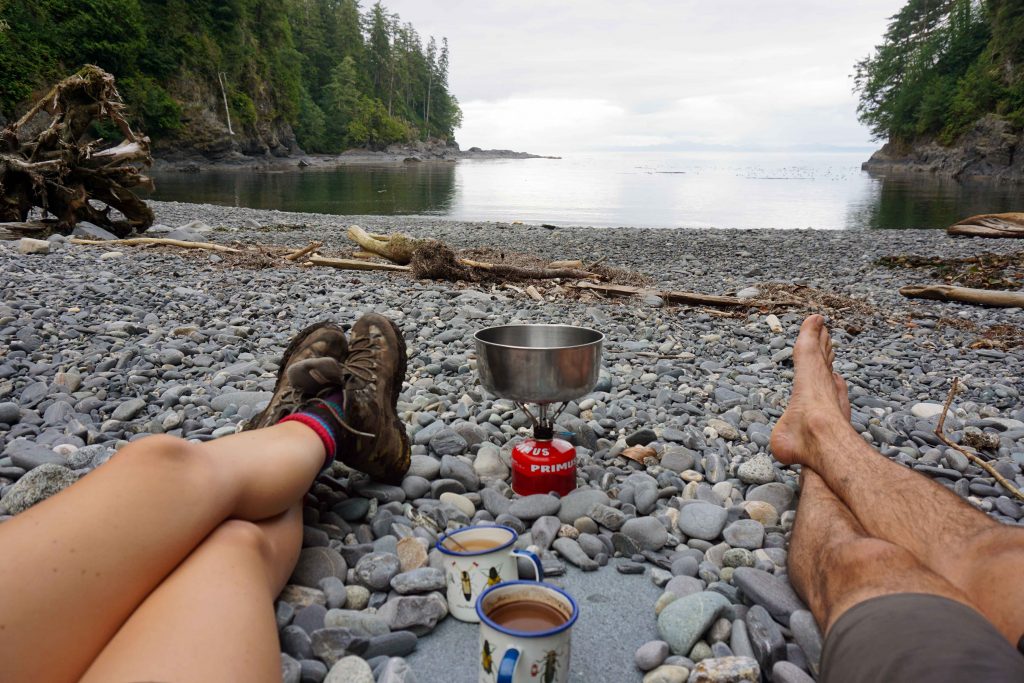When I return from a backcountry camping trip, I have next to no waste. I aspire to lead a waste-free lifestyle as best as possible and it makes sense to carry this ethos into the backcountry. After all, I love spending time in pristine wilderness, so why would I ruin it by generating a load of trash?
Zero-wasting a backcountry camping trip also makes practical sense. You have to pack out what you pack in. So if you’ve got a ton of rubbish, then you have to carry this around until you find a bin. That’s kind of annoying (although it goes without saying that it’s better than littering…)
I’d like to inspire others to reduce their impact too, which is why I’ve shared a few tips below.
Food – make your own and store in reusable containers
Shop-bought food almost inevitably comes wrapped in some kind of plastic. Snack wrappers, cling film and dehydrated meal pouches are the main culprits. To avoid this, make your own food and store it in reusable receptables. Beeswax wraps, silicone resealable bags and old plastic bags are great options. Maybe it’s not as quick and easy as grabbing a camp meal from your local shop, but it’s better for the planet’s health (and yours too, I might add).
For breakfast, I eat oats and dehydrated banana chips. I keep these in an old flour bag which I’ve been reusing for about three years.
Snacks and sandwiches I keep in beeswax wraps and nut milk bags. Take a look at my Best Hiking Snacks for inspiration.
For dinner, I make my own dehydrated camping meals. I store the mixture in small plastic bags which I wash and re-use. Find out how to make your own DIY Dehydrated Camping Meals.
The above solutions aren’t always plastic-free. I don’t use paper bags because they tear easily. Also, I don’t want my food to get wet and mouldy. My focus is on finding sustainable solutions – ones that can be used time and time again.

Buying food – head to dispensaries or bulk sections of the supermarket
When buying food for your backcountry camping trips, you can avoid a lot of plastic by buying from dispensaries and the bulk section of supermarkets. Again, this does take a little bit more effort, but it’s worth it. Take your own containers, be it old bags or nut milk bags.
Water – use a reservoir with a water filter
I use a 1.5 litre water reservoir – I don’t buy single-use water bottles. If you’re heading out for more than a day, then you need to check whether the water sources are safe to drink from. If not, boil the water before consumption and/or get a water filter. This creates less waste than using water purification tablets.
Stainless-steel bottles are also great for the environment because they last a lifetime and don’t leach plastics. However, they’re heavy and don’t usually have much capacity.

Fuel – use matches and recycle canisters
Fuel is a tricky one because it’s inherently wasteful. Making a campfire means that you avoid having to use gas canisters, but comes with its own set of environmental problems. Also, fires aren’t always allowed. If you do make a fire, use matches instead of a lighter. Matches break down, whereas lighters inevitably got lost or thrown out.
I’ve started using a liquid fuel stove because the fuel lasts much longer and can be refilled. If you use gas canisters, then you can buy a tool that safely pierces them, like this one from Jetboil. This allows you to toss them in the recycling bin. You might also be able to take them to a local recycling depot.
Toileting – natural toilet paper is OK!
When going to the toilet in the backcountry, you should dig a cathole, do your business into it and then cover it back up.
Related: How to Poop Outdoors
With regards to toilet paper, Leave No Trace Canada states:
“Use toilet paper sparingly and use only plain, white, non-perfumed brands. Toilet paper must be disposed of properly! It should either placed in a bag and packed out or be thoroughly buried in a cathole. Natural toilet paper has been used by many campers for years. When done correctly, this method is as sanitary as regular toilet paper, but without the impact problems. Popular types of natural toilet paper include stones, vegetation and snow. Obviously, some experimentation is necessary to make this practice work for you, but it is worth a try!”
In short, use non-perfumed toilet paper and bury it in the cathole, or pack it out. Or, to really make it zero-waste, use natural toilet paper. Moss works particularly well in my experience!
Hygiene – go natural
If you’re in the backcountry, then how clean do you really need to be? Honestly, you can wait until you get home to shower. You don’t need to bathe yourself in wet wipes. (FYI: biodegradable wet wipes are a lie – they take a VERY long time to break down).
If possible, I’ll have a dunk in the ocean or a lake, river or stream (assuming swimming is allowed). When it’s cold, I’ve been known to heat some water, strip off and have an ‘intimate’ wash. If I’m feeling really gross, I’ll use a teeny amount of biodegradable soap, although any grey water has to be disposed of at least 200m from alpine lakes and streams. If you use soap sparingly then a little bottle can last years, after which it can be refilled at a dispensary.

I use a bamboo toothbrush and I get my toothpaste from a dispensary which I decant into a little tin for backcountry camping. I often make my own deodorant using this recipe, which I spoon into a little travel-sized container. Or I’ll use Attitude Super Leaves deodorant.
For feminine hygiene, I use a Diva Cup, ensuring I never have to throw away tampons or sanitary pads again. I’ve written a whole blog on this topic titled How to Handle Your Period in the Backcountry.
Gear – buy once, buy well and reuse
When it comes to gear, the best philosophy is to buy once and buy well. If you get quality goods, then they’re much more likely to last. (I know this is expensive, which is why I’ve written a blog post on How to Buy Good Outdoor Gear on the Cheap). Also be sure to look after your stuff. Dry out your tent when you get home, for example, and don’t store your sleeping bag in its stuff-sack. These practices promote longevity.
As for all the other bits and bobs, go for items that are reusable. Rather than a single use plastic spoon, take a spork or stainless-steel cutlery. I take a fork and spoon from my cutlery draw at home and use the knife on my multi-tool. I use a stainless-steel bowl as a pan, which I eat directly out of. (Side note: I actually got the bowl from a thrift store – outdoor gear doesn’t have to be fancy!) My water reservoir stores all my water, but I also have an insulated flask for hot drinks. I make tea with tea leaves, which I keep in a little pouch (and which can be refilled at places like David’s Tea or other dispensaries).
Electronics – opt for rechargeable
For electronics, opt for items that are rechargeable. That way, you’re not gunning through a load of batteries. I use the Petzl Bindi headlamp which can be recharged. Solar battery banks can help your electronics stay topped up with juice.
Dogs – a note on poo bags
I love dogs! But what I don’t love is abandoned poo bags littered along the trails. Sadly, this is something I encounter A LOT. So I just thought I’d use this opportunity to say that poo bags aren’t biodegradable, even if they say they are. OK, they might break down eventually, but it’ll take years and years. If your dog poops, either bag it up and pack it out with you. Or dig a hole and bury it, like you would with human waste.
Getting to the trailhead – try cycling, public transport or car-sharing
Even if you stick to the above advice, one thing will undo all your good work: driving to the trailhead. For most of us, this will be the biggest source of carbon emissions when backcountry camping. It was only when my car broke down that I started to cycle to the trailheads near my home. It’s amazing what you can reach without a vehicle. If this is a step too far, consider public transport or car-sharing instead.
What have I missed? If you have any other zero-waste backcountry camping tips then I’d love to hear them!
